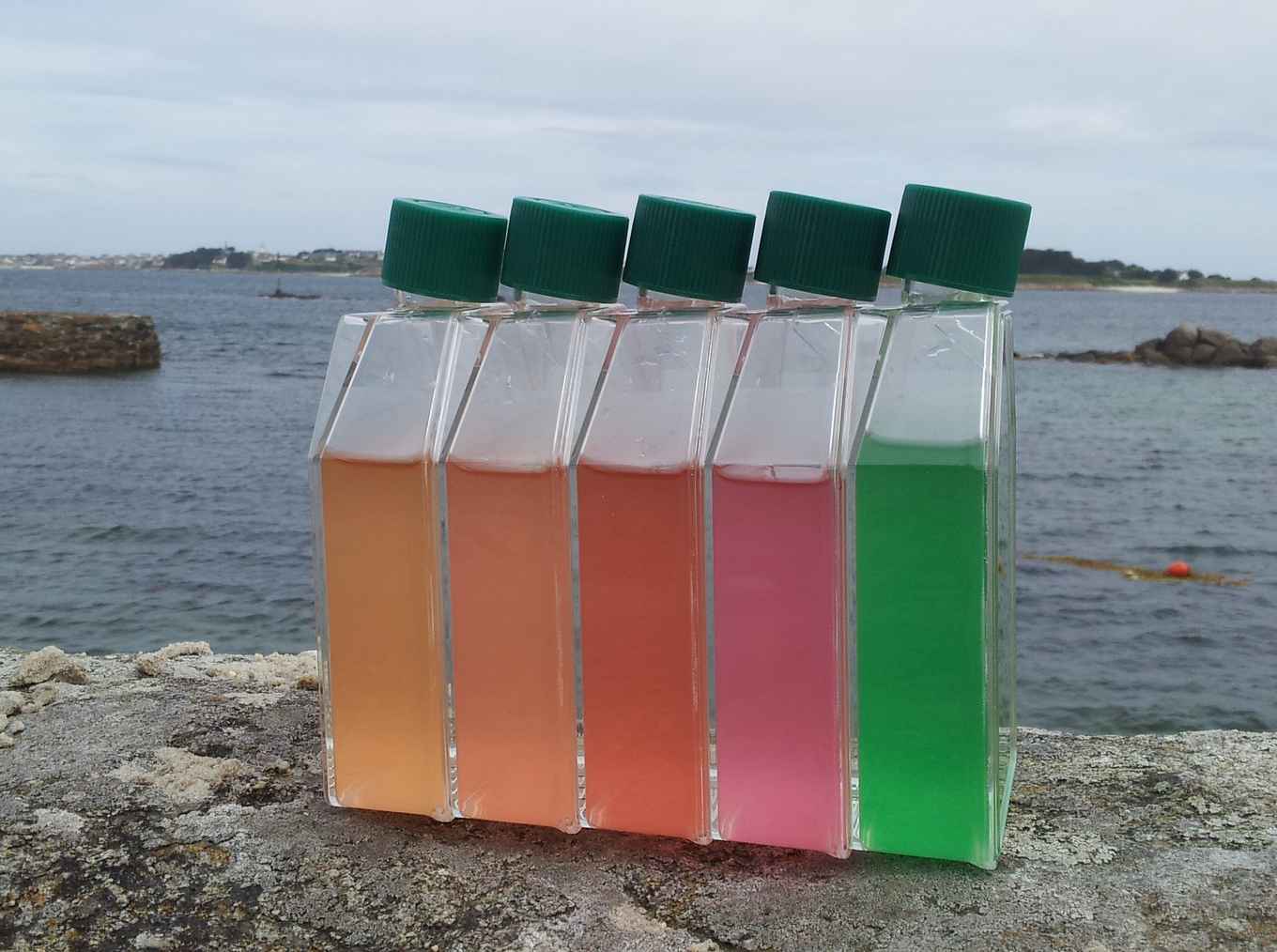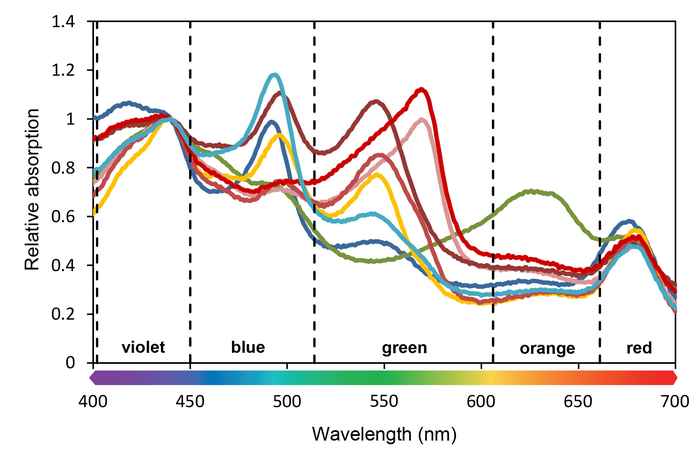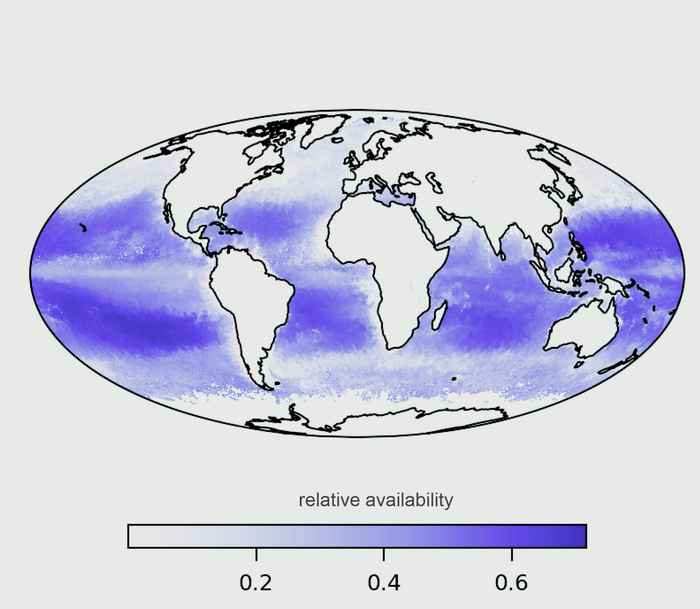Molecular vibrations of water predict global distributions of photosynthetic organisms in lakes and oceans
9 November 2020

With the help of optical models, satellite remote sensing and oceanographic cruises the scientists show that the tiny vibrations of water molecules explain the large-scale geographical distributions of the major photosynthetic pigments across the lakes and oceans of our planet.
Photosynthesis is a key process sustaining nearly all life on Earth, by releasing oxygen into the atmosphere and providing the basis for all food production. Compared to the green leaves on our terrestrial world, photosynthetic organisms of freshwater and marine ecosystems span a much wider range of colors. The lakes and oceans of our planet are teeming with a rich palette of green, red, brown and yellow cyanobacteria and algae. Together they are responsible for almost 50% of the global oxygen production. These species owe their colors to a variety of different photosynthetic pigments. ‘For example, chlorophyll pigments of green algae and terrestrial plants absorb blue and red but not green light. That’s why they look green’, says professor Jef Huisman of the Institute for Biodiversity and Ecosystem Dynamics of the University of Amsterdam. ‘Many red algae and cyanobacteria contain additional pigments that strongly absorb green light, giving these organisms a red or sometimes even pink appearance.’
Vibrations of water molecules
How did this diversity of photosynthetic pigments evolve, and what determines their large-scale distributions across the globe? Almost 15 years ago, Maayke Stomp and Jef Huisman of the University of Amsterdam suggested that the answer is hidden in the tiny vibrations of water molecules. The connections between oxygen (O) and hydrogen (H) atoms in H2O molecules display stretching and bending vibrations by absorbing light energy at specific wavelengths. Model calculations by Stomp and colleagues revealed that light absorption by water molecules at these specific wavelengths creates large gaps in the underwater light spectrum. They argued that the wavebands between these gaps define a series of distinct underwater colors, which they called ‘spectral niches’. These distinct colors are exploited by the different pigments of photosynthetic organisms. However, their theory was still too simplified to be of practical relevance, for instance to predict the spectral niches of real aquatic ecosystems.
New research led by scientists from the University of Amsterdam (UvA) and Vrije Universiteit Amsterdam (VU Amsterdam) now confirms and extends their hypothesis. With a state-of-the-art model of light in the underwater world they show that the vibrational modes of water molecules cause five colors to remain, in the violet, blue, green, orange and red parts of the visible spectrum.
Satellite images give the whole picture
The model was combined with satellite remote sensing of the color of water by the European Space Agency (ESA), to predict the geographical distributions of the spectral niches. PhD candidate Tadzio Holtrop summarizes the results: ‘We found that the violet and blue niches dominate in clear waters of the subtropical oceans. Green and sometimes orange colors prevail in coastal waters. Whereas orange and red colors are dominant in peat lakes with high concentrations of organic matter.’
With the help of colleagues from the Biological Station of Roscoff (CNRS and Sorbonne University), the presence of different photosynthetic pigments was quantified in samples collected during oceanographic cruises and from lakes. Jef Huisman: ‘This showed that our predictions agreed remarkably well with the observed biogeographical distributions of the photosynthetic pigments. Prochlorococcus, for example, is the most abundant photosynthetic organism on our planet. Its pigments absorb the violet and blue niches and therefore it dominates in the violet-blue waters of the subtropical oceans. Species with pigments capturing the green niche prevail in coastal waters. Furthermore, cyanobacteria absorbing orange and red colors develop large and sometimes toxic blooms in the nutrient-rich waters of lakes.’
The subtle vibrations of the water molecules elegantly explain the diversity of photosynthetic pigments that have evolved on our planet and their widespread distribution across lakes and oceans. This knowledge can be used to predict the productivity and species composition of aquatic ecosystems. Furthermore, we gain a better understanding of the impact of pollution and climate change on these underwater ecosystems. Perhaps we can even apply the same principles outside our planet, to predict the colors available for possible photosynthetic organisms on other planets as well.
Publication details
Tadzio Holtrop*, Jef Huisman *, Maayke Stomp, Levi Biersteker, Jeroen Aerts, Théophile Grébert, Frédéric Partensky, Laurence Garczarek, Hendrik Jan van der Woerd: ‘Vibrational modes of water predict spectral niches for photosynthesis in lakes and oceans’, in Nature Ecology and Evolution (online on 9 November 2020). DOI: https://doi.org/10.1038/s41559-020-01330-x
* shared first author


Different peaks represent different photosynthetic pigments. Vertical dashed lines show the wavelengths at which water molecules display molecular vibrations. These wavelengths cause five colors to remain underwater (violet, blue, green, orange and red). Cyanobacteria have tuned their pigments to these five spectral niches. Some species absorb more in the blue, others more in the green and again others more in the orange or red part of the spectrum.

Contact persons
Drs. Tadzio Holtrop, phone: +31 6 24265539, e-mail: tadzio.holtrop@vu.nl
Prof.dr. Jef Huisman, phone: +31 6 26792263, e-mail: j.huisman@uva.nl